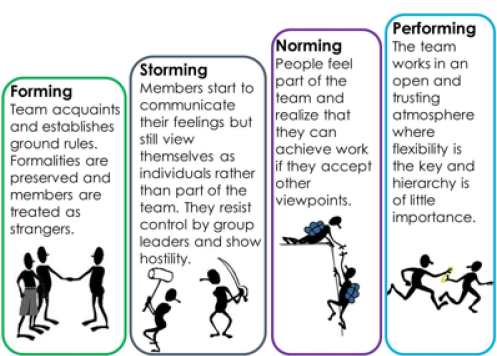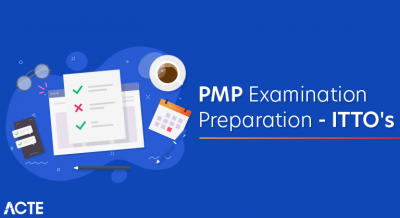
The Project Management Institute defines project management as the application of knowledge, skills, tools, and techniques to project activities to meet project requirements (PMBOK Guide, 3rd Edition, Project Management Institute Inc., PN, 2005). To sum up, project management is all about making the project happen. It is a discipline of initiating, planning, executing, and managing resources with the goal of completing specific deliverables within budget and time.
Why Are Ground Rules Important?
Ground rules are important because they establish the purpose of the dispute resolution process at hand and shape how meetings will be conducted. By setting down rules about who may participate and how decisions will be made, parties can ensure that these processes run more smoothly. In addition, ground rules institute safeguards to protect parties and discourage needless escalation.
A group’s process is more effective when members explicitly identify and commit to following rules about how they will act. Instituting ground rules against personal attacks, for example, can help to keep uncertainty or hostility from becoming issues in themselves. Ground rules for attendance can likewise be important, as the group may be prevented from making decisions or may lack critical information if a key person is absent.
The ground rules that the group agrees to follow will affect the kinds of interventions the facilitator makes. For example, ground rules can help to create a supportive climate for communication between present or former enemies as well as individuals who have undergone social severe social trauma. Rules such as no interrupting, giving every participant equal opportunities to speak, and refraining from judgmental and caustic responses all help to create and sustain safe spaces for communication and foster a sense of security among participants.
Adopting procedures also allows parties to reach agreements early in the discussions. Success early on in developing ground rules demonstrates to skeptical parties that they can indeed reach agreement with one another. [16] This is a first step towards working together effectively to solve the problem at hand. In addition, discussing rules helps to provide guidelines for behavior that participants are likely to follow as they contribute to making the rules.
However, there is sometimes a danger that ground rules will privilege the already privileged groups in a given dialogue or negotiation. For example, in a dialogue about race, white participants will often support ground rules meant to keep anger out of the discussion. But anger is a key element of racial problems, so it needs to be expressed and dealt with. [17] Facilitators should try to ensure that that the rules established for discussions and dialogues do not further oppress historically oppressed people or prevent any group of people from feeling safe in the discussions. (Though it is commonly asserted that “privileged” groups need to be made uncomfortable to learn, meaningful learning and conflict transformation cannot take place if some groups feel so uncomfortable that they do not speak openly about their issues and concerns.)
A successful project manager is one who can envision the entire project from start to finish, and have the prowess to realise this vision. To keep pace with business and IT, project managers need to make their management practices more flexible.

1. Be Agile
Traditional project management methodologies are proving to be too rigid, bureaucratic, and time consuming for today’s dynamic business environment. In fact, these methodologies can work against IT departments. Today, you need to respond with agility to rising issues and changes. The formal documentation and processes involved in traditional project management can weigh you down.
2. Do Not Micromanage
The ideal project managers are leaders, not control freaks. Some project managers can be overly analytical and invest too much time in perfecting details, when they should really focus on achieving milestones and the completion of the project. Flexible project management requires a balance of both the left and right brain, hard and soft skills.
3. Keep Improving Your Project Management Practice
Technology is always evolving to meet the changing needs of users. In the same way, your approach to project management should evolve alongside business and IT processes. Communicate with your team, client, and business partners, as to how you can improve your project management practices.
4. Ongoing Planning
The single most important activity of project managers is planning. Planning must be detailed, organised, and require team participation. And like the real world, plans always change and reprioritise with situations. For this, plan, re-plan, and plan.
5. Work with a Sense of Urgency
Wouldn’t it be great to work with an unlimited pool of time, money, and resources? Here on Earth, however, we have fixed 24 hours in a 7-day week, and we have been taught early on of the importance of spending within our means. Because projects are constricted with a set timeline, budget, and resources, it is of utmost importance that the project process is constantly being driven towards completion. Regular updates, meetings, and follow-ups are essential.
6. Visualise and Communicate all Project Deliverables and Activities
In short, the project manager and team must have a picture of the finished deliverables in the minds of everyone involved. This guides everyone in the same direction. Avoid vague descriptions at all costs, be specific, draw diagrams and pictures, and make certain everyone agrees with it.
7. Complete Deliverables Step-by-Step
The thought of climbing a mountain in one go can be crippling. But to see it as a succession of steps and peaks is less intimidating and more achievable. In the same way, you don’t want to jump in a project with the intent of building all project deliverables at once. Work on each item step-by-step, get process reviews and approvals, and always maintain a sense of direction.
8. Healthy Risk Management
Assign a risk officer who will be responsible for detecting potential project issues. You want someone who has a healthy dose of skepticism:
- All team members should not hesitate to report concerns or challenges.
- Maintain a live project risk database that tracks all issues and resolutions.
- Do not obsess. Assessing risks should not be your main priority. The last thing you want is to be wasting your time and resources on risk management, as it will prevent you from ever completing a project, let alone give you the courage to start it. Remember, you want a healthy dose of risk management, not a crippling one.
9. Open Communication
Communication is vital in all aspects of project management. Adhere to a policy of open communication, encouraging all members to voice opinions and concerns. This cuts through waiting games and significantly reduces the risk of mistakes, saving you time and money.
10. Never Lose Sight of the 3-Factors: Time, Budget, and Quality
While project management practices have changed to be more flexible and open, the foundation remains the same. Project success occurs when it is delivered on time, within budget, with a level of deliverables that are satisfactory to the client. The project manager’s main role is to keep all team members aware of these big three – Time, Budget and Quality.
Ground rules establish how meetings will be run, how team members are expected to interact, and what behaviors are acceptable & unacceptable. Establishing ground rules is a proven technique to promote acceptable behaviors by minimizing confusion and misunderstandings. Employing ground rules may increase productivity and employee satisfaction. Ground rules aid in cooperation and help bring the team together.
- Team should define ground rules that are acceptable by all and can be used each time they meet
- Ground rules can be reinforced, modified or removed in case of unacceptable/unproductive behavior
- Ground rules, along with any other group agreements, must be made easily available to all group members.
- All project team members share responsibility for enforcing the rules once they are established.
Discussing ground rules in areas such as code of conduct, communication, working together or meeting etiquette allows team members to discover values that are important to one another and thereby increasing team bonding. It also reduces conflicts between team members by protecting individual’s interest and allowing everyone to express in the meeting without being dominated by an individual.
Procedure
- Prepare a clear Agenda
- Each team member may work individually or with a partner
- Each team member may take few minutes to think & share best practices from past projects, behaviors, and actions that helped them perform
- Team shares best practices with the larger audience
- Team creates ground rules leveraging these best practices





